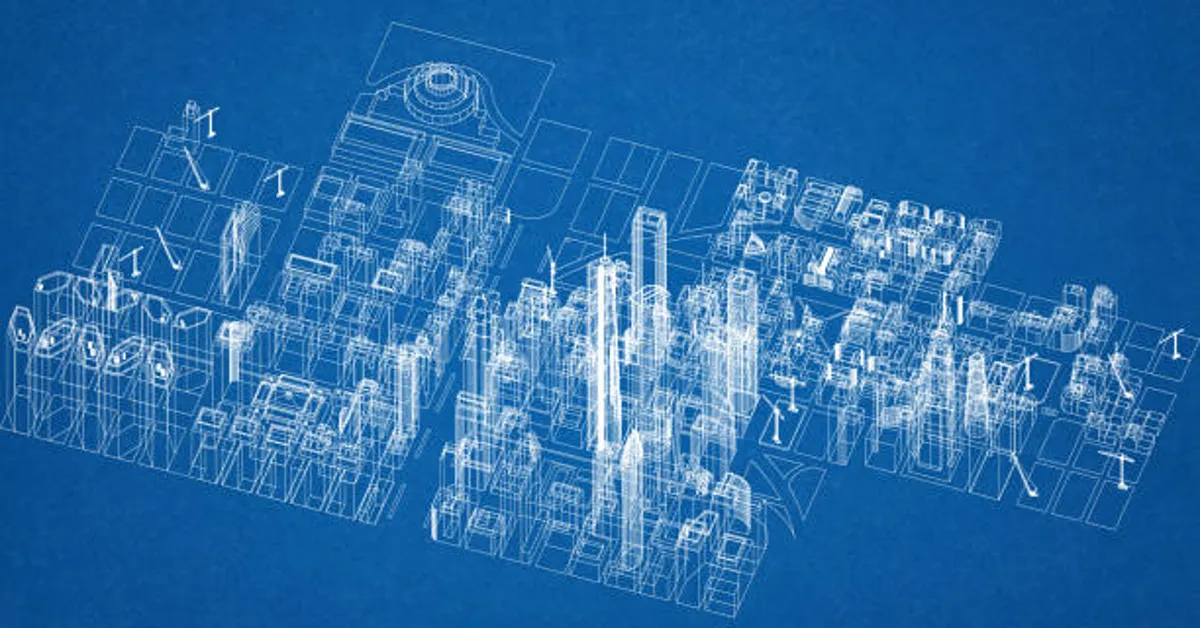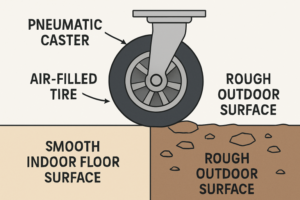The term Acceleration City describes a conceptual and practical approach to designing cities where growth, technology, and human progress move at a pace significantly faster than traditional urban development models. Unlike conventional urban planning that often responds slowly to change, the idea of an acceleration city emphasizes adaptability, scalability, and speed—ensuring that infrastructure, governance, and daily life can keep pace with advancements in technology, societal needs, and global challenges. At its core, an acceleration city is not simply about rapid growth in population or infrastructure but about accelerating the quality of life, opportunities, and sustainability available to its residents. It envisions a space where innovation thrives, public services adapt in real time, and ecosystems support resilience while balancing humanity’s environmental responsibilities.
This article will explore the foundations of acceleration cities, the driving forces behind their emergence, the challenges they face, and the opportunities they present for humanity. We will dive deep into their design principles, social implications, and economic potential, ultimately providing a roadmap for how acceleration cities might redefine our understanding of urban life in the 21st century.
Defining the Concept of an Acceleration City
An acceleration city is more than a smart city with sensors and data-driven governance. While smart cities primarily focus on improving efficiency through digital technology, acceleration cities combine technological infrastructure with adaptive systems capable of continuous evolution. In simple terms, it is a city designed to scale growth dynamically, absorbing population increases, technological disruptions, and resource pressures without collapsing under the weight of change.
Whereas industrial-era cities were shaped around factories and transportation hubs, and 20th-century cities grew around automobiles and service economies, acceleration cities prioritize fluid systems. These include agile governance models, modular urban design, rapid renewable energy deployment, and advanced transportation networks that shrink distances while maximizing accessibility. Their identity comes from movement, progress, and a refusal to remain static.
Key Features of an Acceleration City
To better understand how such a city functions, it helps to break down the defining features:
| Feature | Description | Purpose in Acceleration City |
|---|---|---|
| Adaptive Governance | Policy frameworks updated quickly through AI, citizen input, and predictive modeling. | Ensures laws and systems remain relevant and responsive. |
| Dynamic Infrastructure | Modular housing, expandable transit, and flexible utilities. | Allows for rapid population and economic growth without strain. |
| Technology Integration | IoT, AI, robotics, and blockchain embedded into daily life. | Enhances decision-making, safety, and efficiency. |
| Sustainable Growth | Focus on renewable energy, circular economy, and green urban design. | Balances speed with ecological responsibility. |
| Inclusive Economy | Policies encouraging entrepreneurship, digital skills, and universal access. | Prevents inequality in rapidly shifting economies. |
| High-Mobility Networks | Hyperloop, autonomous vehicles, and drone logistics. | Reduces congestion, increases connectivity, and speeds commerce. |
These features combine to form an ecosystem where growth is not hindered by outdated systems but instead supported by continuous innovation.
The Driving Forces Behind Acceleration Cities
1. Technological Advancements
The rise of AI, machine learning, and automation has revolutionized the way cities can function. Predictive algorithms help anticipate traffic patterns, resource demands, and disaster risks. Instead of building infrastructure and hoping it lasts for decades unchanged, acceleration cities use technology to reconfigure themselves daily.
2. Population Pressure
The United Nations projects that by 2050, over 68% of the global population will live in urban areas. Traditional urban centers cannot sustain such growth without suffering congestion, pollution, and social inequality. Acceleration cities respond to these pressures by designing for expansion and adaptability.
3. Climate Change and Sustainability Needs
Acceleration cities cannot simply accelerate unchecked growth; they must accelerate toward sustainability. With rising sea levels, extreme weather, and dwindling resources, resilience through green technologies and sustainable systems becomes mandatory.
4. Global Economic Competition
Cities are no longer just national hubs—they compete internationally to attract talent, investment, and innovation. Acceleration cities provide an edge by offering cutting-edge infrastructure and environments that appeal to forward-thinking companies and individuals.
Design Principles of an Acceleration City
Acceleration cities are guided by principles that ensure rapid growth is balanced with livability:
- Scalability – Buildings, transport, and services are designed to expand as demand rises. Modular housing can grow vertically or horizontally depending on population growth.
- Decentralization – Instead of concentrating all functions in one core area, acceleration cities create polycentric zones where economic, cultural, and residential areas co-exist across multiple hubs.
- Resilience – Redundancy in systems like energy and water supply ensures that if one network fails, others can compensate.
- Citizen-Centricity – Technology empowers residents to participate in governance, access real-time information, and co-create solutions.
- Circular Economy Integration – Waste is minimized through recycling, energy recapture, and material reuse. Every resource loop is shortened to reduce environmental impact.
The Social Dimension of Acceleration Cities
Acceleration cities are not only about structures and systems—they must also address the human experience. Social equity plays a significant role in determining whether acceleration benefits all residents or only a select few. For example, if automation accelerates productivity but displaces workers without retraining opportunities, inequality will deepen. Therefore, acceleration cities emphasize education and lifelong learning ecosystems where citizens continuously acquire new skills.
Healthcare, too, becomes an accelerated service, with AI-enabled diagnostics, telemedicine, and preventive monitoring systems. Public safety evolves with predictive policing tools and community-led approaches supported by transparent data sharing. In essence, every social service—health, education, justice, and welfare—becomes more agile, efficient, and accessible.
Economic Opportunities in an Acceleration City
Acceleration cities are economic engines designed to foster innovation. By merging digital platforms, global connectivity, and supportive governance, they open pathways for diverse industries:
- Tech and AI Startups thrive due to accessible funding, shared digital infrastructure, and high-speed networks.
- Green Energy Firms benefit from demand for sustainable power and smart-grid integration.
- Logistics and Mobility Companies expand with autonomous vehicles, drone-based deliveries, and rapid transport links.
- Creative and Knowledge Economies gain from co-working hubs, cultural exchange, and digitally networked global markets.
The economy of an acceleration city is designed not just to grow quickly but to adapt continuously, ensuring resilience against global shocks such as pandemics, financial downturns, or supply-chain crises.
Environmental Considerations
Rapid growth without ecological responsibility leads to disaster. Therefore, sustainability lies at the heart of acceleration cities. Strategies include:
- Green Architecture – Buildings covered in vertical gardens and equipped with solar skins.
- Water Recycling Systems – Closed-loop treatment facilities ensuring no wastage.
- Renewable Energy Grids – Solar, wind, geothermal, and tidal energy integrated into microgrids.
- Zero-Emission Transport – Only electric, hydrogen, or renewable-powered mobility options are allowed.
- Biodiversity Corridors – Green belts and protected areas interwoven with urban space to sustain natural ecosystems.
By combining growth with ecological mindfulness, acceleration cities avoid the pitfalls of unsustainable urbanization.
Challenges and Risks
Despite their promise, acceleration cities also face challenges:
- Digital Divide – If not carefully managed, technology-based growth may leave behind populations without access to digital infrastructure.
- Privacy Concerns – Extensive use of sensors, surveillance, and data raises issues of personal freedom.
- Economic Displacement – Automation and rapid industrial change risk rendering jobs obsolete.
- Cultural Erosion – Fast development may overshadow local traditions, heritage, and community bonds.
- Governance Complexity – Rapid decision-making must still maintain fairness, accountability, and inclusivity.
These challenges require thoughtful strategies and constant citizen involvement to ensure acceleration does not compromise dignity, security, and identity.
The Roadmap to Building Acceleration Cities
For acceleration cities to transition from vision to reality, a multi-step roadmap is needed:
- Pilot Zones – Start with smaller experimental districts that implement modular infrastructure and adaptive governance.
- Public-Private Partnerships – Governments and private firms co-invest in high-speed networks, renewable energy, and housing.
- Global Collaboration – Cities exchange best practices internationally to avoid repeating mistakes.
- Citizen Engagement – Continuous feedback mechanisms where residents shape development priorities.
- Scalable Technologies – Prioritize open-source and modular technologies that can expand across urban regions.
Through these steps, acceleration cities evolve steadily, balancing speed with responsibility.
Conclusion
The idea of an acceleration city represents a paradigm shift in how humanity perceives urban living. Instead of cities passively reacting to population growth, technological disruption, and climate challenges, acceleration cities actively embrace change. They thrive on adaptability, innovation, and sustainability, offering a framework where rapid growth translates into better opportunities, improved quality of life, and resilience in the face of uncertainty.
Acceleration cities are not a distant utopia—they are the logical next step in urban evolution. With deliberate planning, ethical governance, and inclusive participation, these cities can become blueprints for the 21st century and beyond, proving that speed and sustainability can coexist.
ALSO READ: Discovering Try Street: Culture, Lifestyle, and Experiences
FAQs
1. What makes an acceleration city different from a smart city?
An acceleration city goes beyond the efficiency of a smart city by focusing on adaptability and rapid scalability. While smart cities rely on digital systems to improve services, acceleration cities redesign entire governance, infrastructure, and social systems to evolve continuously with population and technological changes.
2. How do acceleration cities handle sustainability?
They integrate renewable energy, green architecture, water recycling, and circular economies to ensure rapid growth does not harm the environment. Every system is designed to reduce waste, capture resources, and balance ecological footprints with expansion.
3. Can existing cities transform into acceleration cities?
Yes, but the transformation requires massive restructuring. Cities can begin by creating pilot districts with modular infrastructure, adaptive policies, and smart governance. Over time, these innovations can expand citywide, gradually shifting the entire urban ecosystem.
4. What challenges do acceleration cities face?
Key challenges include privacy concerns, economic displacement due to automation, governance complexities, and the risk of widening inequality. Addressing these requires inclusive planning, citizen engagement, and ethical technology use.
5. Are acceleration cities economically viable?
Yes, they are designed to attract global investment, foster entrepreneurship, and promote sustainable industries. By creating environments conducive to rapid innovation and resilient economies, acceleration cities become highly competitive in the global economic landscape.









